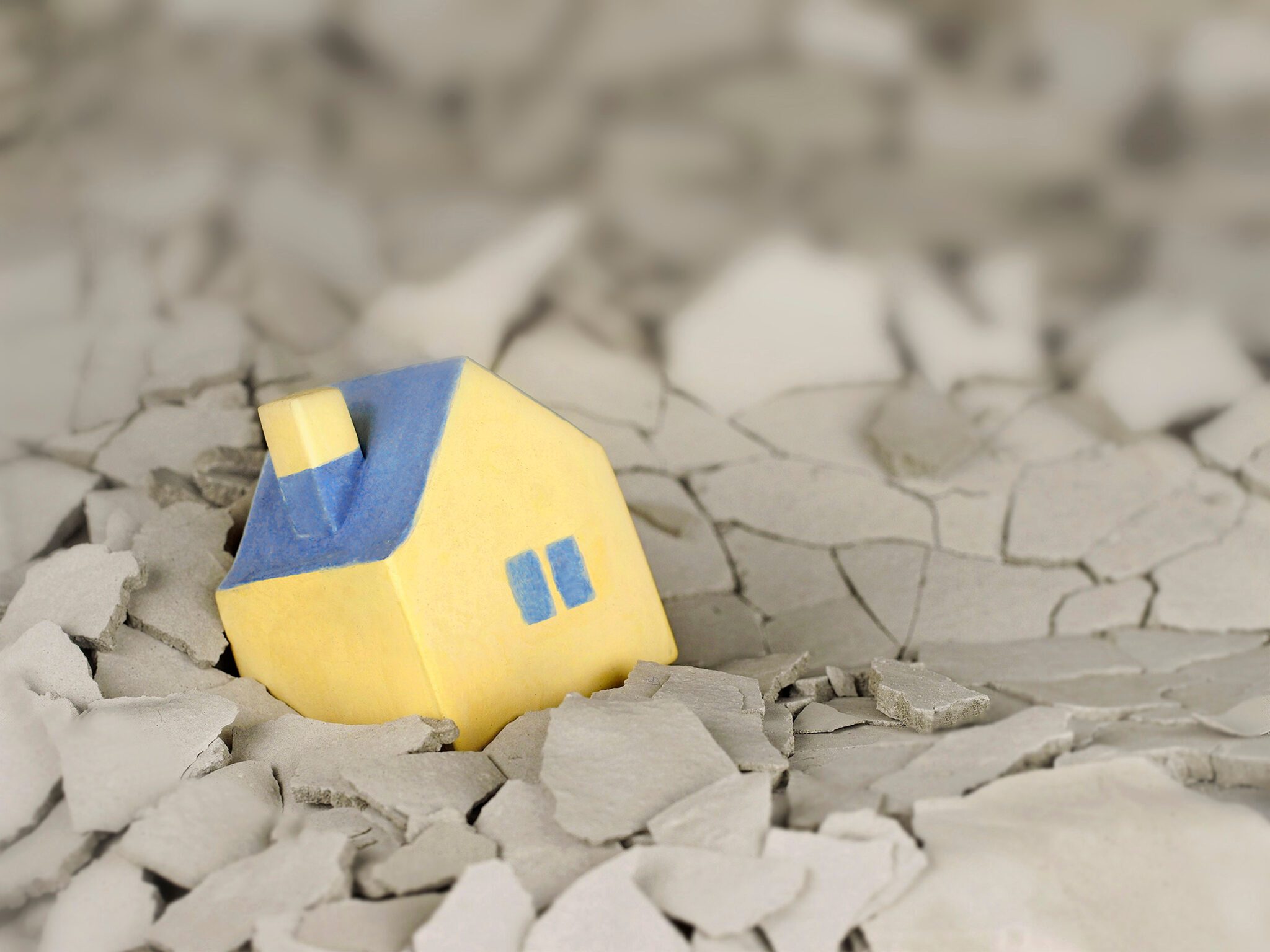Preparing For an Earthquake: Safety Tips for Your Home and Family

Did you know nearly half of all Americans live in areas that could be at risk for a potentially dangerous earthquake? This finding might come as a surprise to many who may assume that most earthquakes occur in western states. However, according to the American Red Cross, 45 U.S. states and territories are at what they term “moderate to very high risk of earthquakes.”
And while any sort of natural disaster could strike at any time, earthquakes are unique in that there is never any warning, unlike a wildfire or hurricane, where residents are often forewarned and can evacuate ahead of time. That’s why earthquake preparation is particularly important. Here’s what you need to know.
1. Assess your risk.
Find out if you live in a high-risk area (this earthquake hazard map from the Federal Emergency Management Agency is a good place to start) and talk to your family members about the fact that an earthquake is a possibility. Give them the facts about how earthquakes can happen without warning, which is why you need to be prepared.
2. Practice what to do if an earthquake happens.
Ready.gov advises that people “drop, cover, and hold on.”
- Drop onto your hands and knees.
- Cover your head and neck with your arms. If possible, you should crawl under sturdy furniture for more protection. If something isn’t readily available, crawl next to an interior wall, but stay away from the windows in case the glass should break. Note that while people used to believe they should stand under a doorway, the American Red Cross cautions that it isn’t any sturdier than other parts of your home. If you’re in bed, cover your head with a pillow.
- Hold on to the legs of the furniture if available while the earthquake rolls through the house.
- If you are in a car, pull over, stop, and set your parking brake.
3. Prepare your home now.
- Bolt furniture, heaters and appliances, and anything that’s hanging, like artwork or TVs, to the wall.
- Remove mirrors or heavy shelves from above beds and couches to prevent falling injuries.
- Keep heavy items on lower shelves of bookcases.
- For an extra layer of protection, make sure you add earthquake insurance, as it requires a separate policy from homeowners insurance.
4. Create a communication plan.
In most of our practice scenarios, we envision our families being together when the earthquake happens so we are able to ride it out together. Realistically, though, you could be scattered at home or school or even in the car. Often phone lines can be down or otherwise overloaded with local calls, so it’s best to have an out-of-state person as your contact and instruct everyone to check in to relay their location and condition. Remember that sometimes it can be easier to text than make a call.
5. Freshen your emergency kit.
You’ll want to have basic supplies ready, just as you would for any emergency. Ready.gov offers a handy checklist for what to include in your kit, such as food, water, sanitation and medical supplies, safety equipment and of course, masks to prevent the spread of COVID-19. It’s wise to make mini duplicates of these kits to keep in cars, at school, and at the office.
6. Know what to do when it’s over.
The danger isn’t over once the earth stops shaking—there might be aftershocks, so you should stay where you are as long as you are safe. If you are in a building that seems structurally unsound, go outside when you can, taking care to steer clear of other buildings and power lines. If you’re trapped, bang on the wall, send a text if you can, or otherwise make noise to alert others.
When you have reached safety, register on the American Red Cross’ “Safe and Well” website to let others know you are safe. You can also search for family members or send an alert if someone you know needs extra assistance.
7. Add an earthquake policy to your homeowners insurance.
Standard homeowners and renters insurance policies don’t cover earthquake damage, so you want to make sure you have a separate earthquake policy. Talk to your insurance carrier about how the deductible works as it will likely differ from a set amount (if you’re a Matic customer, we can help you with this). Typically it will be a percentage that ranges from 2% to 20% of the replacement value of your home.
What if my home has been affected?
If you’re affected by an earthquake, we are here for you to help you recoup your losses and begin to replace and rebuild. Here is how to start the process:
1. Assess the damage to your property.
You might think that you should file a claim immediately, regardless of the level of damage, but you don’t want to have a claim on your record if it’s not necessary. This is because your claims history can negatively impact your insurance rates in the future. The best way to decide if you should file a claim? Get an estimate of the cost of repairs and compare it to your deductible to ensure the claim is worth filing, rather than paying out of pocket.
2. If the damage is significant enough, contact your carrier to file a claim.
3. Be sure to take photos and save receipts, in case your adjuster has additional questions later.
Are you covered from earthquake damage?
Get an online quote (available for CA, WA, and OR residents) to ensure your home and valuables are protected in case of an earthquake.
Start My Quote


